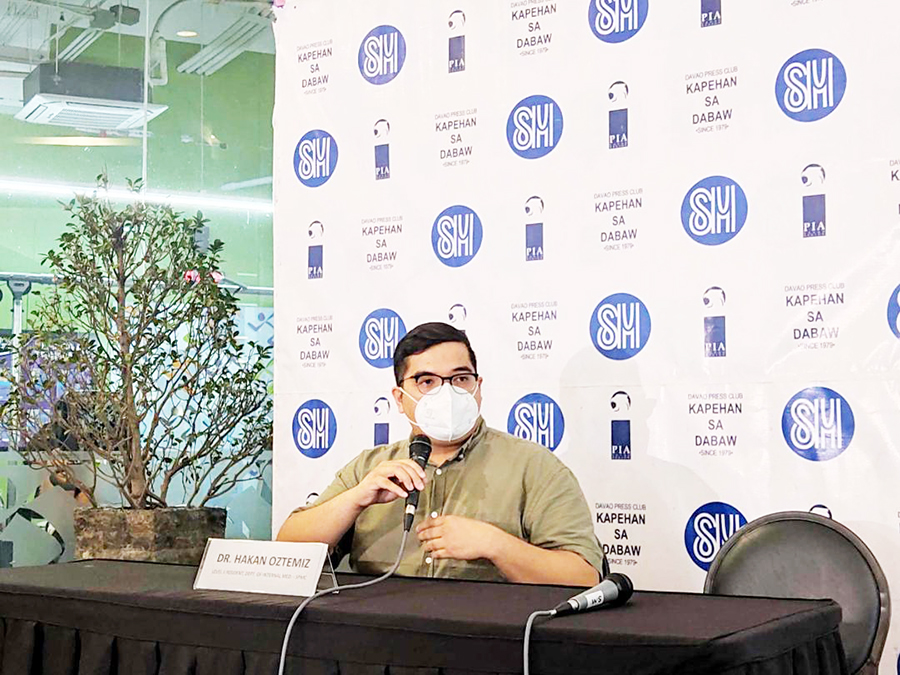DAVAO CITY – A representative from the Department of Internal Medicine of the Southern Philippines Medical Center (SPMC) here said there is no surge in atypical or walking pneumonia within the hospital.
Walking pneumonia is a lung ailment caused by mycoplasma pneumonia. It gained attention recently as outbreaks were reported in other nations, including China and Denmark.
Dr. Hakan Oztemiz, Internal Medicine Level II Resident at SPMC, said walking pneumonia is not alarming based on their low record. However, he added that using face masks and abiding by the health protocols are advisable as the pandemic still exists.

OZTEMIZ (Ivy Tejano)
“There is a possibility for the transmission of mycoplasma pneumonia through respiratory droplets. You might be infected but wala ka kabalo (you are not aware),” Oztemiz said during the yearend Kapihan sa Dabaw at SM City Davao on Monday.
Oztemiz said walking pneumonia is mild, and the symptoms are less severe. He added that these symptoms, such as sore throat, chest pain, fatigue, cough, sneeze, chills, and headache, typically appear two to three weeks after becoming infected.
The doctor encouraged people to exercise self-awareness as individuals with underlying health conditions like asthma and those with weakened immune systems are at higher risk of suffering severe cases of mycoplasma pneumonia.
Walking pneumonia commonly affects children ages 18 and below and elderly ages 60 and above but can be caught by anyone of any age. The transmission mode is similar to flu and most infections occur in areas with high population density.
“It is tough to differentiate atypical mycoplasma pneumonia from regular pneumonia. My advice is if you have the flu-like symptoms for over a week already, have yourself checked with a doctor for treatment,” Oztemiz said.
Oztemiz reminded the people to observe minimum health standards, such as washing hands with soap, using an alcohol-based sanitizer, following proper sneezing and coughing etiquette to prevent the spread of the bacteria, and wearing a facemask if symptoms exist.